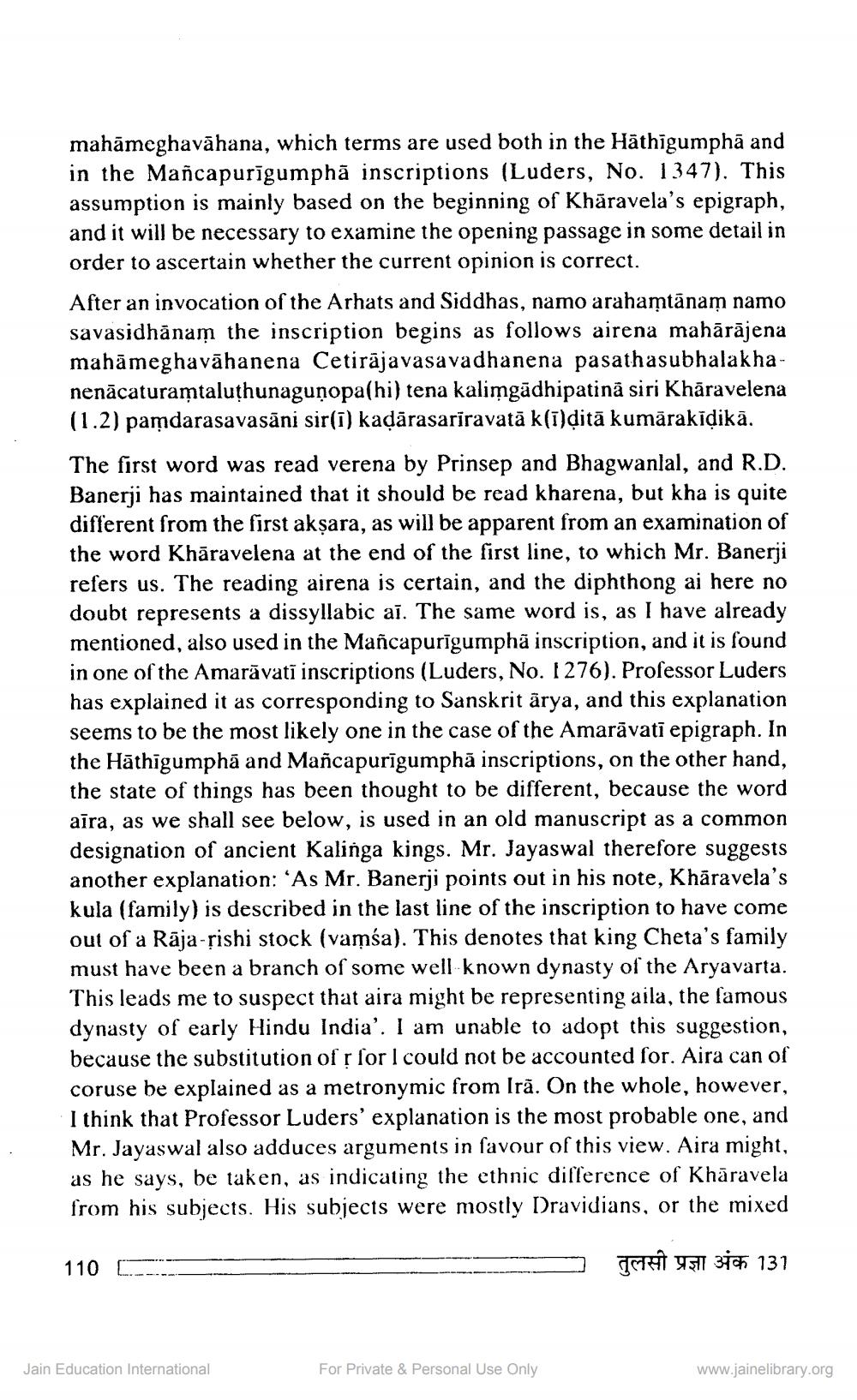________________
mahāmeghavāhana, which terms are used both in the Hāthigumpha and in the Mañcapurīgumphā inscriptions (Luders, No. 1347). This assumption is mainly based on the beginning of Khāravela's epigraph, and it will be necessary to examine the opening passage in some detail in order to ascertain whether the current opinion is correct. After an invocation of the Arhats and Siddhas, namo arahaņtānam namo savasidhānam the inscription begins as follows airena mahārājena mahāmeghavāhanena Cetirājavasavadhanena pasathasubhalakhanenācaturamtaluthunaguņopa(hi) tena kalimgādhipatinä siri Khāravelena (1.2) paņdarasavasāni sir(i) kadārasariravatā klī)ditā kumārakidikā. The first word was read verena by Prinsep and Bhagwanlal, and R.D. Banerji has maintained that it should be read kharena, but kha is quite different from the first akşara, as will be apparent from an examination of the word Khāravelena at the end of the first line, to which Mr. Banerji refers us. The reading airena is certain, and the diphthong ai here no doubt represents a dissyllabic ai. The same word is, as I have already mentioned, also used in the Mañcapurīgumphã inscription, and it is found in one of the Amaravati inscriptions (Luders. No. 1 276). Professor Luders has explained it as corresponding to Sanskrit ärya, and this explanation seems to be the most likely one in the case of the Amarāvati epigraph. In the Hāthīgumphā and Mañcapurīgumphā inscriptions, on the other hand, the state of things has been thought to be different, because the word aīra, as we shall see below, is used in an old manuscript as a common designation of ancient Kalinga kings. Mr. Jayaswal therefore suggests another explanation: 'As Mr. Banerji points out in his note, Khāravela's kula (family) is described in the last line of the inscription to have come out of a Rāja-sishi stock (vamsa). This denotes that king Cheta's family must have been a branch of some well known dynasty of the Aryavarta. This leads me to suspect that aira might be representing aila, the famous dynasty of early Hindu India'. I am unable to adopt this suggestion, because the substitution of r for I could not be accounted for. Aira can of coruse be explained as a metronymic from Irā. On the whole, however, I think that Professor Luders' explanation is the most probable one, and Mr. Jayaswal also adduces arguments in favour of this view. Aira might, as he says, be taken, as indicating the ethnic difference of Khäravela from his subjects. His subjects were mostly Dravidians, or the mixed
110 C
-
TC
51 31 131
Jain Education International
For Private & Personal Use Only
www.jainelibrary.org




